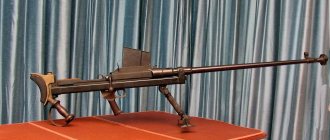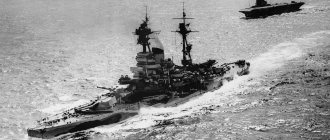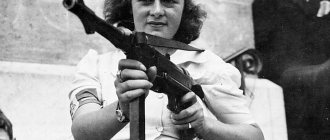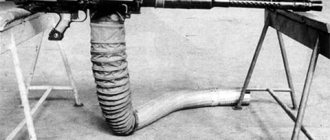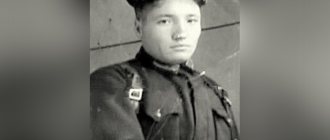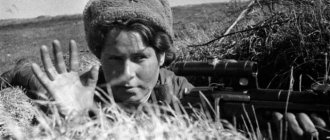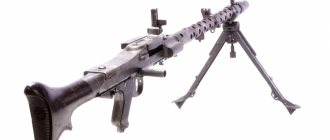Home » Small arms of the past, present and future » Rifles and their replacement. Features of infantry rearmament of the main participants in World War II
Small arms of the past, present and future
byakin 05.05.2021 2072
14
in Favoritesin Favoritesfrom Favorites 8
Rifles and their replacement. Features of infantry rearmament of the main participants in World War II
By the beginning of World War II, the basis of small arms in the infantry of all participating countries were repeating rifles of relatively old models. At the same time, a search was carried out for new weapon designs and tactics for their use, which would increase the combat effectiveness of the infantry. Subsequently, this led to a serious change in the infantry weapons systems of the main countries - with a reduction in the role of rifles and an increase in the importance of other weapons.
Soviet experience
At the end of the thirties, the main weapon of the Red Army was the Mosin rifle mod. 1891/30 and a unified carbine arr. 1938. Such weapons, despite recent modernization, had a number of shortcomings, and it was proposed to replace them in the foreseeable future. To this end, throughout the decade, work was carried out to create new models.
In 1936, the S.G. automatic rifle entered service. Simonova ABC-36. It had obvious advantages over the old “Three Line”, but was overly complex and expensive, and also not reliable enough. Such weapons remained in production for several years, and during this time no more than 60-65 thousand rifles were produced. Obviously, this was not enough for a complete rearmament of the army.
Baltic sailors with PPD (left and center) and PPSh (right)
In 1938, the more successful F.V. self-loading rifle was adopted. Tokarev SVT-38. It was distinguished by greater simplicity and reliability, thanks to which it was produced until 1945. The Red Army received more than 1.6 million SVT-38s and was actively used as a weapon by infantry, snipers, etc. However, the Tokarev rifle was more complex and more expensive than the Mosin rifle, which again did not allow for complete rearmament.
At the same time, the development of submachine guns took place. In 1941, the new PPSh-41 went into production, and later it was supplemented with the PPS-42/43 product. These samples combined high fire characteristics and ease of production, which led to well-known consequences. During the war years, approx. 6 million PPS and about 500 thousand PPP. The mass production of such weapons made it possible to gradually rearm most of the Red Army soldiers, increasing the firepower of infantry units.
Defenders of Smolensk with Mosin rifles and PPSh-41 submachine guns, July 1, 1941.
However, even the massive PPSh and PPS could not displace the pre-war “Three Line”. Moreover, even during the war it underwent modernization - in 1944 a new version of the carbine appeared. Production of rifle mod. 1891/30 stopped only in 1945, and carbines were produced until the end of the decade.
The Soviet army finally abandoned the Mosin rifle with the advent of a new set of weapons, which included a Simonov carbine and a Kalashnikov assault rifle. Then these samples were replaced by submachine guns from the war.
Hand grenades
Of course, rifles and machine guns can be considered the main infantry weapons. But how can we not mention the huge role of the use of various infantry grenades. Powerful, lightweight, and the perfect size for throwing, grenades were an invaluable tool for close-in attacks on enemy positions. In addition to the effect of direct and fragmentation damage, grenades always had a huge shock and demoralizing effect. Starting from the famous “lemons” in the Russian and American armies and ending with the German grenade “on a stick” (nicknamed “potato masher” due to its long handle). A rifle can do a lot of damage to a fighter's body, but wounds caused by fragmentation grenades are something else.
British rearmament
In 1895, Great Britain mastered the production of the new Lee-Enfield repeating rifle, and in the following decades this weapon went through several upgrades. After the outbreak of World War II, new modifications appeared - the simplified Rifle rifle, No.4 Mk I and the Rifle airborne carbine, No.5 Mk I. Over the entire production period, until the fifties, more than 17 million Lee-Enfield rifles of all modifications were manufactured .
British intelligence officers in Italy, 1944. A soldier holds a Lee-Enfield rifle. Photo Imperial War Museum
Before the war, the British army showed no real interest in self-loading rifles, and work on submachine guns began only in 1940. The first example of this kind was the Lanchester, a copy of the German MP-28. It was produced approx. 100 thousand of such products. In 1941, STEN entered service, featuring an extremely simple design. Thanks to this, before the end of the war they managed to release approx. 4 million submachine guns.
A fighter with a STEN Mk II submachine gun, February 1945. Photo: Imperial War Museum
The mass production of submachine guns of a number of modifications made it possible to rearm a significant part of the combat units of the warring army. At the same time, the Lee-Enfield rifles remained of great importance and continued to be widely used. The transition to the modern L1A1 self-loading rifle began only in 1957.
American developments
Since the beginning of the 20th century. The main weapon of the US Army was the Springfield M1903 rifle. Despite the appearance of newer and more advanced models, it remained in the series until 1949. By this time, more than 3 million rifles had been produced, and production had increased significantly during the Second World War.
Back in the late twenties, the American army became interested in self-loading and automatic systems. Based on the results of the competition, the M1 Garand self-loading rifle was adopted for service in 1936. By the beginning of the war, this rifle was able to supplant the old M1903, although there was no talk of a complete replacement yet. Almost until the end of World War II, the M1 and M1903 were used in parallel, but the number of Garands constantly grew and during the war equaled the number of Springfields, and then surpassed it.
American soldier with an M1 Garand rifle. US Army Photo
In 1938, the J. Thompson submachine gun entered service with the US Army, which was subsequently developed. Before the end of the war, more than 1.2 million of these products were produced in several modifications. Then the simpler and cheaper M3 appeared, manufactured in quantities of more than 600 thousand units.
Since 1941, the M1 Carbine and its variants were produced to replace rifles in some roles. This weapon turned out to be quite successful, simple and cheap. By the end of the war, more than 6.2 million units were supplied to the army.
American soldiers repair a fence, France, July 25, 1944. Both soldiers are armed with M1 Carbine carbines. The soldier in the foreground also carries a Springfield M1903 rifle. Photo by NARA
By the early forties, the Springfield M1903 rifle lost its status as the main and most popular infantry weapon. Subsequently, several samples, produced in a large series, competed for this title. It is curious that the Springfield, unlike some of its replacements, is still in service with the United States - although it is used in extremely limited niches.
PPSh-41
Submachine gun of the Shpagin system, model 1941. Used in the winter war with Finland. In the defense of Stalingrad, Soviet troops using PPSh had a much better chance of destroying the enemy at close range than with the popular Russian Mosin rifle. The troops needed, first of all, high fire performance at short distances in urban battles. A true miracle of mass production, the PPSh was extremely easy to manufacture (at the height of the war, Russian factories produced up to 3,000 machine guns per day), very reliable and extremely easy to use. It could fire both bursts and single shots.
Equipped with a 71-round drum magazine, this machine gun gave the Russians fire superiority at close range. The PPSh was so effective that the Russian command armed entire regiments and divisions with it. But perhaps the best evidence of the popularity of this weapon was its highest rating among German troops. Wehrmacht soldiers willingly used captured PPSh assault rifles throughout the war.
German approach
Since the end of the 19th century. The German army used the Gewehr 98 rifle and its various modifications. Another modernization was carried out in the mid-thirties, resulting in the appearance of the Karabiner 98 Kurz (Kar 98k) carbine. By the beginning of World War II, they managed to produce a large number of such products and make them the most popular infantry weapon. Production of carbines continued until 1945; was manufactured approx. 14.6 million units
In Germany, an original rifle squad structure was used. Its center was the machine gun, and other soldiers had to protect the machine gunner and ensure his effective operation. In this role, shooters could use a repeating carbine and, as it was believed, did not need any other weapon.
However, already in 1941, the Gewehr 41 self-loading rifle was adopted, which made it possible to increase the rate of fire and firepower. No more than 145 thousand of these rifles were produced, after which the more advanced Gewehr 43, made using Soviet ideas, went into production. The number of such weapons exceeded 400 thousand pieces.
Several types of submachine guns were produced in a relatively large series. The most popular and famous was the MP-38/40, produced in quantities of at least 1.1 million units. However, such a weapon was not considered as a replacement for the Kar 98k for a long time. It was used as a means of self-defense for officers, crews of combat vehicles, etc.
In 1942, the German army received a few MKb 42(H) carbines, and in 1943, deliveries of the more advanced MP 43/44, which later became the StG 44, began. Such weapons, unlike submachine guns, were considered as a replacement for repeating carbines and self-loading rifles.
"Sturmgever" in battle. Photo Bundesarchiv of Germany
A specific feature of the German infantry weapons system was the presence of many models, often performing the same functions. This did not allow us to concentrate efforts on specific projects - and did not allow new samples to reach million-dollar series. As a result, none of the subsequent developments in numbers caught up with the Kar 98k carbines.
German sniper with Kar 98k, June 1942. Photo: Bundesarchiv of Germany
After the war, numerous carbines were used by both Germanys, and were also actively transferred to other countries. They continued to be used until the 50-60s. and were removed from service only due to the appearance of newer models, Soviet and NATO models.
Luger PO8
One of the most coveted combat mementos for any Allied soldier is the Luger PO8. This may seem a little strange to describe a deadly weapon, but the Luger PO8 was truly a work of art and many gun collectors have it in their collections. Chicly designed, extremely comfortable in the hand and manufactured to the highest standards. In addition, the pistol had very high shooting accuracy and became a kind of symbol of Nazi weapons.
Designed as an automatic pistol to replace revolvers, the Luger was highly regarded not only for its unique design, but also for its long service life. It remains today the most “collectible” German weapon of that war. It periodically appears as a personal military weapon in the present time.

